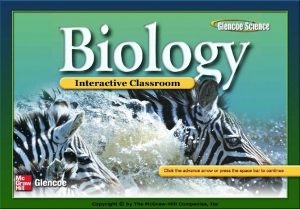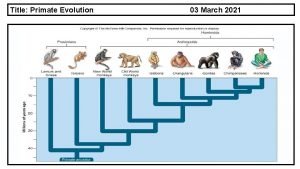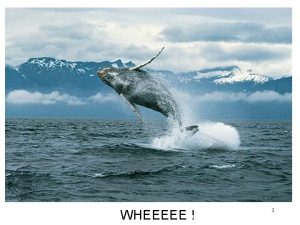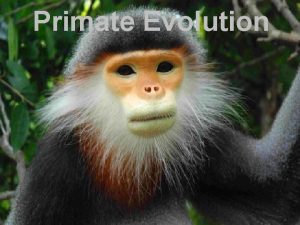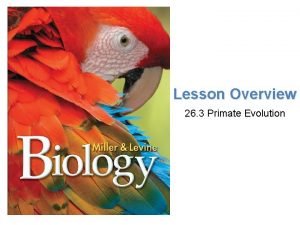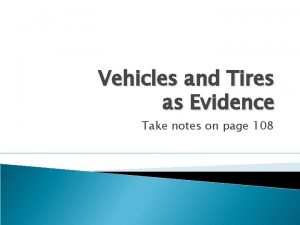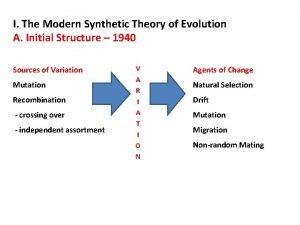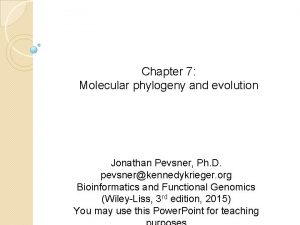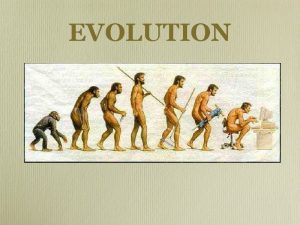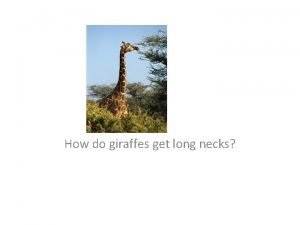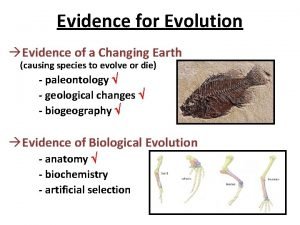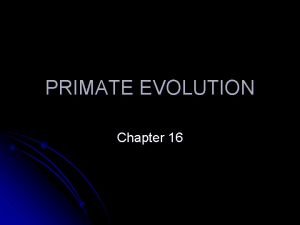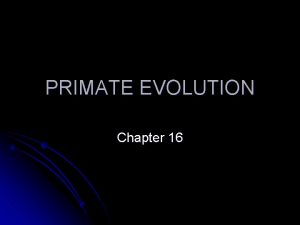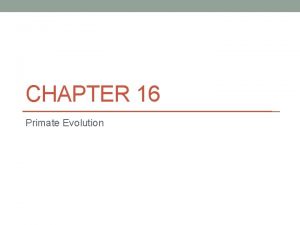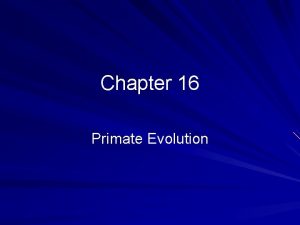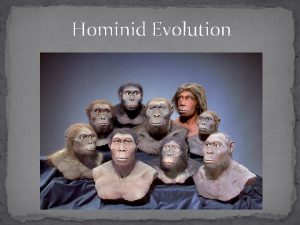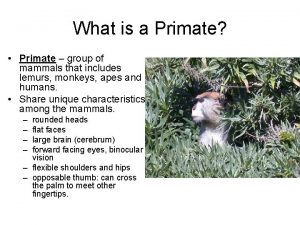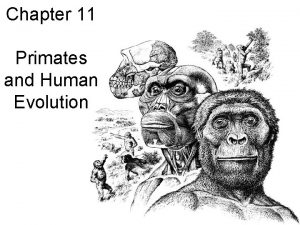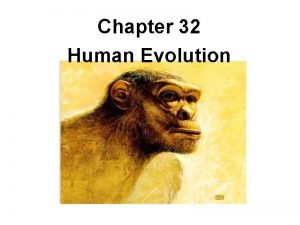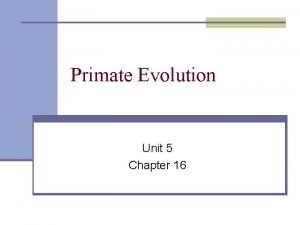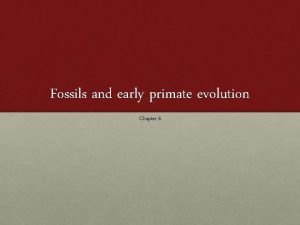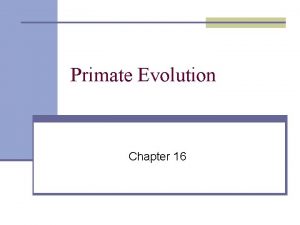PRIMATE EVOLUTION Chapter 16 Notes If you printed





















- Slides: 21

PRIMATE EVOLUTION Chapter 16 Notes If you printed the outline, take it out – otherwise this will be posted after we finish up the notes.

Primate Adaptation & Evolution Ch. 16, Sec. 1

Primates = group of animals that includes lemurs, monkeys, apes, and humans l Common traits among primates: l l Large brains (relative to body size) l Social interactions l Flexible shoulder & hip joints


l l Opposable Thumb = thumb that can cross the palm to meet the other fingertips Adaptation for griping & climbing

l Binocular Vision = both eyes in the front l l Better depth perception, jumping from tree to tree Color Vision allows primates to find food that has most nutrition l Ex: Unripe vs. Ripe fruit

Primate Origins Primates share evolutionary history l Fossil, anatomical, DNA evidence show a close relationship l Primates classified into 2 groups l

Primate Ancestors Haplorhines Strepsirrhines Anthropoids Hominids Old World monkeys Tarsiers African apes Gibbons Orangutans Humans New World monkeys Lemurs Lorises, Pottos and Galagos

Humanlike Primates Evolve l Anthropoids = humanlike primates; hominoids, New World monkeys, Old World monkeys

New World monkeys found in Central & South America l Arboreal (live in trees) l Prehensile Tail = can be used as a 5 th limb l

Old World monkeys found in Africa & Asia l No prehensile tail l Can live in trees or on the ground l

Hominoids = apes & humans l Apes l l No l tails, walk on 2 legs w/ support from hands Humans l Large brains, walk upright

Human Ancestry Ch. 16, Sec. 2

Hominids l 5 -8 mya in Africa a common ancestor branched off into 2 groups (chimps & humans) l Supported by DNA evidence, comparison of similar proteins Hominoids = primates that can walk on 2 legs (gorillas, chimps, bonobos, humans) l Hominids = bipedal primates, only walk on 2 legs l

Early Hominids l l l Australopithecine = early hominids w/ apelike and humanlike qualities, intermediate between chimp and human “Lucy” Smaller brains, bipedal



Modern Humans are Homo sapiens l Other hominids are also classified in the genus Homo l 2. 5 mya earliest hominids in the genus Homo l


H. sapiens H. neanderthalensis H. heidelbergensis H. erectus Millions of years ago H. antecessor H. ergaster H. rudolfensis s stu bu Homo habilis o. r P. boisel P A. garhi Paranthropus aethiopicus A. bahrelghazali A. afarensis Ardipithecus ramidus Australopithecus anamensis Kenyanthropus platyops

http: //www. pbs. org/wgbh/aso/tryit/evolutio n/# l http: //dsc. discovery. com/tv/ardipithecus/ar dipithecus. html l
 Study guide chapter 16 section 1 primates answer key
Study guide chapter 16 section 1 primates answer key Chapter 16 primate evolution
Chapter 16 primate evolution Primate evolution tree
Primate evolution tree Artiodactyla
Artiodactyla Evolution of primate
Evolution of primate Primates
Primates Evidence for evolution doodle notes
Evidence for evolution doodle notes Modern synthetic theory of evolution notes
Modern synthetic theory of evolution notes Neutral theory of molecular evolution notes
Neutral theory of molecular evolution notes Lamarck theory of evolution notes
Lamarck theory of evolution notes Evolution and community ecology guided notes
Evolution and community ecology guided notes Evolution of shrm notes
Evolution of shrm notes Lamarck theory of evolution notes
Lamarck theory of evolution notes Lamarck theory of evolution
Lamarck theory of evolution Printed words including dialogue
Printed words including dialogue Headline line
Headline line Package research case closed
Package research case closed Training printed materials
Training printed materials Items with an advertiser's name printed on them
Items with an advertiser's name printed on them Plumbing symbols definition
Plumbing symbols definition A northern renaissance artist who also published books was
A northern renaissance artist who also published books was Portfolio sample for students
Portfolio sample for students
